Winters are harsh – everybody knows it. From the hibernation of other creatures to the preparation of humans for the winter, all speak about its cruelty. When it comes to Nepal, the temperature can downgrade to 0 degrees Celcius in the winter.
Winters are suitable for a cozy sleep, but for traveling, it might be one of the most significant barriers, especially if you are traveling to the Himalayas in Nepal. While it strikes 0 Degrees Celcius in Kathmandu, temperatures of the Himalayan region can go down to 36° C / -33° F. So, having a better plan to keep yourself warm in this area might be a wise choice.
Let’s dive into the topic.
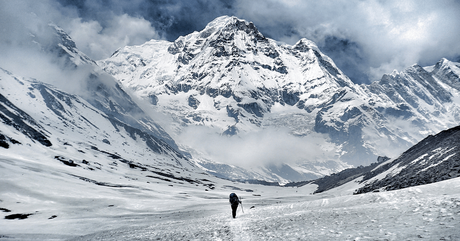
How is trekking in Annapurna Circuit during the winter? You’ve always wanted to hike the Annapurna Circuit. And now that winter is right around the corner; there’s no better time to make it happen. With the right gear, preparation, and attitude, conquering this trek is doable—even in the coldest months.
In this guide, we’ll get you to everything that you should acknowledge before hitting the trail. We’ll cover everything from packing your bag to dealing with altitude sickness. So if you’re ready to take on the challenge, read our top tips for trekking Annapurna Circuit in winter.
Pre-Departure Checklist
Are you planning to trek the Annapurna Circuit in winter? There are a few things you need to take into account before you depart.
First, make sure you have all the necessary gear. This includes a good quality backpack, proper clothing for the cold weather, and a headlamp. You’ll also want to pack extra food, water, snacks, and money for emergencies.
Second, be sure to familiarize yourself with the route. The Annapurna Circuit is a challenging trek, and knowing what to expect is essential before you set out.
Finally, make sure you have travel insurance. This is essential for any travel but necessary when hiking in a remote area like the Annapurna Circuit.
What to Expect When Trekking Annapurna in Winter?
The Annapurna Circuit is one of the most popular treks in the world, and for a good reason. But trekking during winter can be challenging, especially if you’re unprepared.
That’s why we’ve made this guide to trekking Annapurna Circuit in winter. We’ll tell you what to expect and pack, so you can be sure you’re ready for the challenge.
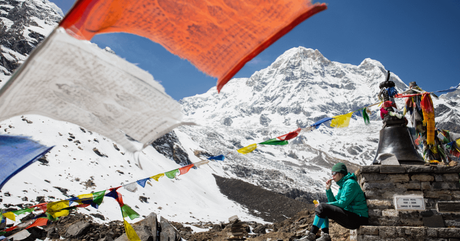
Strategies for Cold Weather Gear and Clothing
The key is to layer your clothing when you’re gearing up for a trek in the cold. Start with a thermal base layer to keep your body warm, then add some fleece or wool layers. A water-resistant jacket is a must, as is a good hat and gloves.
Make sure your boots are waterproof and have a good pair of socks.
In addition to your clothing, it’s essential to take care of your gear. Make sure to pack a thermos of hot tea or coffee, and bring along snacks that will provide you with energy. And don’t forget sunscreen, lip balm, and sunglasses—even in the cold, the sun can be brutal.
Accommodation and Food Options on the Trek
When it comes to accommodations and food while you’re out on the trek, you’ll find a variety of both. It’s important to note that lodges along the Annapurna Circuit in the winter may be fewer than in summer due to decreased business, but options are still available. It’s best to book ahead of time using a reliable agency and do some research beforehand, so you know what to expect.
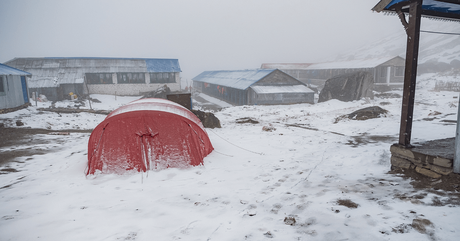
When it comes to food, most of the lodges along the trek will have limited menu options during winter months due to a lack of ingredients. Stick with traditional Nepali dishes like dal bhat, momos, and thukpa for hearty meals that will help you keep your energy levels up during your challenging trek. One thing’s for sure – no matter where you are along the trail, hot tea is available for purchase!
Challenges For Annapurna Circuit Trek In Winter
Avoiding Altitude Sickness
Altitude sickness is a very real danger with journeys like the Annapurna Circuit. It’s caused by inadequate oxygen at high elevations and can leave you feeling dizzy and short of breath. You will also find lightheadedness, difficulty sleeping, and a loss of appetite.
To avoid mountain sickness, preparing before starting your trek is essential. Make sure you drink plenty of fluids, at least 2-3 liters daily, as dehydration will only worsen things. It would be best if you get some rest before your trek to prepare your body for the hike ahead. When on the circuit, make sure you take it slow and steady so that your body can adjust to the changing altitude levels slowly and steadily.
Also, pack some over-the-counter medications like ibuprofen or paracetamol—these might help if you experience any altitude sickness symptoms during your trek. Finally, don’t forget to check in regularly with yourself while on the trail—if you feel unwell, check in with other hikers or local guides who can provide advice or assistance if needed.
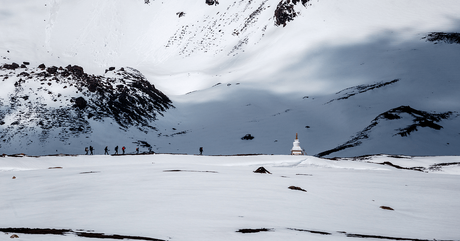
Heavy Snowfall
As mentioned above, the temperature during the winter in Annapurna Circuit remains very low. And heavy snowfalls are the common thing that prevails in the region. Snowfall can be fun, but heavy snowfall might be a problem to trekkers since it blocks the route, blurs visibility, and makes your body unadaptable.
Annapurna Circuit trek starts from 2,493 feet to 11,319 feet – the temperatures in the lower areas are subtle, but when you reach up, it decreases to minus.
We suggest you carry a trekking pole and wear the best winter outfits.
Challenging Pathways/Routes
Trekkers must pass through some of the worst rugged routes in Annapurna Circuit Trek. So it might be a topic of discussion if you are untrained or just a passive traveler. You will have the strength, endurance, and stamina to cherish your trek to Annapurna. Also, it takes several days to complete the hike, so we suggest you be ready physically and mentally before taking on to Annapurna Circuit.
Hiring Guide For Annapurna Circuit Trek
Trekking to Annapurna Circuit in November, December, and January is the hardest thing to do. Some trekkers might not be able to complete their trek, so hiring a guide might be a great help. It also assures your safety throughout the trail.
You will get to know the easiest and shortest routes throughout the trek with the help of your guide. Similarly, he can be a translator while you communicate with the local people around the region. Guides charge around 25-30 dollars per day.
You can also hire porters to carry your baggage; porters usually carry 10kgs of load, and hiring them costs only 15-20 dollars per day.
Also Read: What kind of weather can I expect in the Annapurna circuit?
Trekking Permit required for Annapurna Circuit Trekking
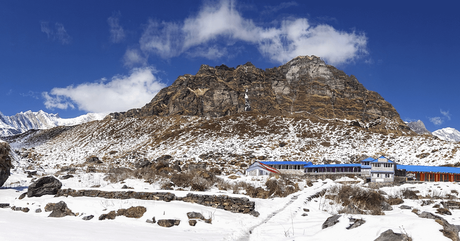
Safety Tips for Winter Trekking in Annapurna Circuit
As you’re making your way through the Annapurna Circuit Trek in winter, it’s important to remember a few safety tips.
First of all, be prepared for the cold. Winter temperatures can quickly drop to -10°C during nighttime at higher altitudes, so make sure to bring warm layers and a good sleeping bag with you. Wear lots of layers and bring proper winter gear (gloves, hat, Balaclava, etc.) to protect your head and ears from the cold.
Also, learn the basics of altitude sickness by preparing for what symptoms to look for and when to turn back. Altitude affects everyone differently, so you should be educated about the signs and symptoms of AMS (Acute Mountain Sickness). Monitoring your blood oxygen saturation rate is one great way of watching this; investing in an oximeter can help you stay safe at high altitudes.
Finally, limit your trekking hours as much as possible during colder months; take breaks often if needed and stay hydrated by drinking abundant water throughout the day. Eating small snacks helps keep energy levels so you can reach safe lower-altitude areas in time for the night.
In winter, the Annapurna Circuit Trek is an excellent challenge for any trekker. The key is to be prepared and to have the proper gear. With the right preparation, you can conquer the challenge and have an amazing experience.
